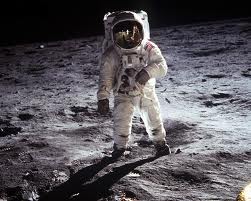So you want to be an astronaut?
AFR: Making money out of food
14 January, 2012How to thrive in China private banking
1 February, 2012Discovery Channel Magazine, January 2012. 
“Planned a mission to Mars lately? Ever replaced a gyro on an orbiting telescope travelling at 17,600mph in a full vacuum?”
There just aren’t enough recruitment ads like this. These are the opening lines of NASA’s guide to employee benefits for its next intake of astronaut candidates – which is open for applications right now. Being an astronaut has been a dream to young people ever since the dawn of the Mercury and Vostok programs, but for a select few, it can be a reality.
But have you got what it takes to be an astronaut? And just what is it that you need to become one? To find out, DCM assembled some of the most knowledgeable voices imaginable: the head of astronaut selection at NASA, and two of the nine surviving men who have not only gone into space, but walked on the surface of the moon. You can’t get better advice than that.
THE GLAMOUR
“I was naked, lying on my side on a table in the NASA Flight Medicine Clinic bathroom, probing at my rear end with the nozzle of an enema. Welcome to the astronaut selection process, I thought.” So wrote Mike Mullane, who flew three times on the Space Shuttle.
For astronauts, the rewards of their missions are almost unimaginably good: sights that few others will ever see, and a chance to be part of the history of human endeavour. But all who have worked in the space corps are keen to stress that there is a lot of hard work, discomfort and a surprising amount of boredom involved in getting there.
Consider this: Alan Bean had one of the most stellar careers of all astronauts. He flew on Apollo 12 and was the fourth man to walk on the moon. He was mission commander on the second manned flight to the Skylab space station, and set a then-record for time in space. But in an 18-year career at NASA, he went to space just twice. Many fly once in an entire career. Vastly more time is spent waiting than adventuring.
“It was very frustrating,” Bean recalls from the Houston studio where, today, he paints pictures of his memories of the lunar surface. “Other people in my group were flying and I wasn’t. I felt that I wasn’t measuring up to the guys who were being selected.” But it was the same for all potential astronauts, even in the Apollo era when they tended to be fearless and hot-blooded “right stuff” test pilots from the Navy and Air Force who wanted nothing more than to get airborne. “Even in the early days there was a lot of preparation that went into a flight; it wasn’t just ‘let’s go strap it on’,” recalls Charlie Duke, the 10th man to walk on the moon, on Apollo 16, who had been selected while a test pilot under legendary aviator Chuck Yeager. “So for an astronaut patience was a good character trait, because you needed to wait your turn.” He waited six years between selection as an astronaut candidate and flying in 1972 – his only ever flight into space.
To read the rest of this article, contact me or Discovery Channel Magazine
